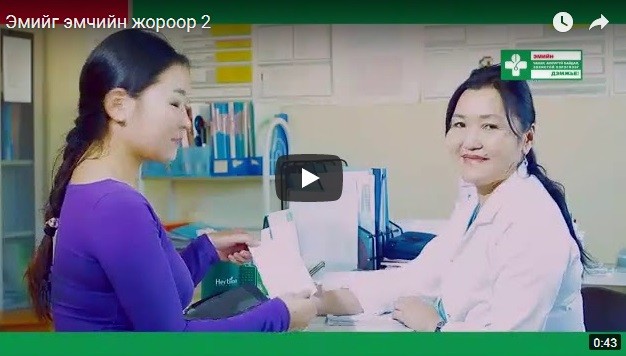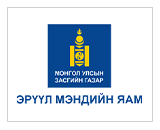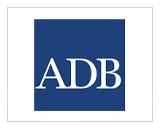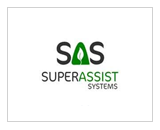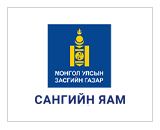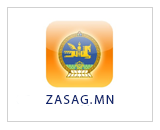Mongolia Human Resource Development and Drug Safety Project
2014-12-15
Mongolia Human Resource Development and Drug Safety Project
Oxford Policy Management – HERA- Gerege Partners Consortium
GMP Progress Report up to September 2012
Patrick Hoet
Tsatsral Ichinkhorloo
- GMP Training
As per project objectives in June 2012 training was provided to start the improvement process of the GMP level of the manufacturers of finished pharmaceutical products in Mongolia. The training was organized in three phases.
1.1 CEO and Owners of the pharmaceutical companies
The CEOs, owners of the pharmaceutical companies had been invited to an introductory meeting. The purpose of the meeting was to inform them about the effort going on to implement at the country level the GMP as described in the World Health Organization guidelines. These requirements are similar to the one described in the MNS 5524:2011. The major change is that in the near future these guidelines will be implemented and enforced.
The attendance was of 40 persons. No objections were expressed by the CEOs during the question and answer session.
1.2 Basic principles of GMP
Two days training covered the different chapters of the World Health Organization GMP principles. It was indicated that these requirements are similar to the one described in the MNS 5524:2011. The major change is that in the near future these guidelines will be implemented and enforced.
The attendance was of 52 persons: production managers and quality managers of local manufacturers, lecturers of Pharmacy School, HSUM.
1.3 Training for inspectors
Provided 8 hours theory training and 8 hours on spot training for inspectors covering chapters related with inspection of World Health Organization GMP guideline. It was indicated that these requirements are similar to the one described in the MNS 5524:2011. The major change is that in the near future these guidelines will be implemented and enforced.
The attendance in theory training was of 23 persons: inspectors of GASI on medicines and biopreparations, SIAH (old name) officers. From first day attendance were selected 6 inspectors of GASI and 1 officer of SIAH for next day on spot training. On spot training was given practical experience on conducting GMP inspection.
1.4 GMP advanced training
Full day training was organized with the participation of 50 persons.
The training covered the following topics:
- Heat Ventilation Air Conditioning Systems
- Water for Pharmaceutical use
- General introduction to Validation
- Stability Studies testing on API and Finished Pharmaceutical Product.
- GMP Gap analysis and consultancy
36 manufacturers are currently licensed in Mongolia: 5 are manufacturing Traditional Mongolian Medicines, 5 make medical devices, 5 biological preparations and 21 pharmaceuticals. The current GMP standard MNS 5524:2011 is covering sterile and non sterile pharmaceuticals and biological preparations. Traditional medicines GMP standard is under development. The reasons of choosing these seven manufacturers are:
- IVCO – highest level of GMP implementation in Mongolia
- Tsombo Pharmaceutical Manufacturer – requested for assistance by official letter dated 26 March 2012
- Monos Pharma – requested for assistance by official letter dated 30 March 2012, company has EBRD investment
- Astrapharm Company – company has new facility drawing and land for new construction
- Nakhia Pharmaceutical factory – good level of GMP implementation, has solid dose facility expansion drawing and land for new construction
- Munkhiin Tun Company – has done new building
- DEGDPharma Company – requested for assistance during September mission, has good infrastructure especially HVAC
7 manufactures have been visited and a GMP gap analysis was performed. 6 had been planned during the two weeks mission in June 2012, but at the request of a company a 7th has been assessed.
In fact the visit was to perform on site gap analysis of each of the manufacturers in terms of GMP compliance and to provide some counseling how to address some of the gaps.
In each of the visits a member of the Inspectorate (GASI) was present. The presence of the Inspectors is part of the training program for inspectors to improve the knowledge in terms of GMP compliance.
For each audit an extensive report has been written up, with the observations and indicating each time which is the GMP reference requirement to be met (6 to 8 pages report).
The reports are considered as confidential for the manufacturer. These reports have been sent only to the manufacturers and not to the Inspectors present during the assessment. It was a commitment of the inspectors to consider the information obtained as confidential and not to use it in direct relationship with any evaluation of the pharmaceutical activities of the pharmaceutical company visited.
The reference used in each of these site visits-audits has been the WHO good manufacturing practices for pharmaceutical products: main principles (WHO Technical Report Series, N° 961, 2011 and also if applicable, the WHO good manufacturing practices for sterile pharmaceutical products (WHO Technical Report Series, N° 957, 2010). It is important to highlight that the WHO references are very similar to the MNS 5524:2011.
The commitment has been made, that in the context of the Fourth Health Sector Development Project, to help companies to improve the GMP level, a follow up will be done for each company in the coming months (Q1, 2013) and this every quarter in 2013, pending the progress of each company. Astrapharm Company is excluded from the assessment list due to small land for construction, which limiting modification of drawing according to the GMP.
The companies assessed are:
- IVCO
- Tsombo Pharmaceutical Manufacturer
- Monos Pharma
- Astrapharm Company
- Nakhia Pharmaceutical factory
- Munkhiin Tun Company
- DEGDPharma Company
Being considered as confidential information the individual reports will not be part of this report.
It has been strongly recommended to the management of each pharmaceutical company to have a corrective action plan prepared with dates and to spend the necessary efforts and time to address the different deficiencies.
Review of proposed new infrastructures
In the case of Astrapharm, Nakhia and Monos detailed drawings of new building or extensions were reviewed. Comments and modifications were suggested.
In the case of Munkhiin Tun Company, a visit of the new building was performed. The civil work was finished, and internal partitions were set up. So the review in this case was to review the drawings of this new site. Comments and suggestions were made to be able to comply with the GMP requirements.
Highlights of GMP deficiencies encountered in the companies assessed.
The deficiencies described are not present in each company, but are frequently observed. Not all aspects of aspects of the WHO GMP Guidelines have been reviewed.
- Basic labeling with identification and status (quarantine, under testing, released, rejected) of incoming raw material, in process product and finished product is often not followed in all cases.
- In a number of sites cleanliness of production rooms and equipment is of major concern, because it is the source of potential cross contamination. Raw material is left in the room and on the equipment. Effective cleaning and maintenance is not done to avoid cross contamination; build-up of dust or dirt could cause adverse effect on the quality of products.
- In several companies antibiotics are produces on the same production lines and rooms as the conventional drugs. The WHO Guidelines and the current GMP rules and interpretation are asking to have these productions in separate facilities or fully segregated.
- In several companies herbal products are manufactured on the same lines as the conventional drugs. The herbal products should also been produced on separate lines and e.g. the raw material needs to be stored separately from the APIs and other raw materials as excipients.
- Some companies do not have any system of Air Handling, which poses the critical question of potential cross contamination and microbiological safety.
- Companies, which have a HVAC system, are all lacking to have the system validated in terms of the non-viable particle count and therefore cannot assure the Classification of the production rooms. This is explained, but not justified, by the lack of the testing equipment in Mongolia.
- Qualification of equipment, validation of processes, and validation of cleaning procedures are practically absent. The approach is often of testing the outcome, instead of having built in the process the appropriate parameters assuring the quality of the product. Most companies are still with the culture of “quality control testing” instead of “quality assurance”. Training has been given on the general validation approaches during this mission.
- Appropriate training of operators working in areas where contamination is a hazard, e.g. clean areas or areas where sensitizing materials are handled (antibiotics e.g.).
- Techniques used in microbiology should be validated. As e.g. settle plates are exposed for 5 or 10 minutes in the production rooms, when the WHO guidelines are suggesting 4h. The incubation times are also to be validated.
- A general lack of appropriate documentation of the manufacturing process has been observed. In some cases no formal Batch Manufacturing Record is available and the traceability of the records is not achieved. A lack of recording the critical steps of the manufacturing process is also an issue to address.
- Quality Control Laboratories: some basic compliance with the GMP guidelines should be improved (documentation; some analytical methods).
3. Follow up action plan
Based on the progress the following actions will be undertaken.
- Early 2013 Tsatsral Ichinkhorloo will follow up with 6 manufacturers to review the progress on the improvement of the GMP. Onsite training will be provided to each of the manufacturers, based on the needs identified during these follow-ups
On the job GMP coaching will be provided pending the needs.
- In April 2013 another follow up will be performed with each of the manufacturers to review the progress and to provide the required on site training to improve the GMP status.
Mongolia Human Resource Development and Drug Safety Project
Oxford Policy Management – HERA- Gerege Partners Consortium
GMP Progress Report up to September 2012
Patrick Hoet
Tsatsral Ichinkhorloo
- GMP Training
As per project objectives in June 2012 training was provided to start the improvement process of the GMP level of the manufacturers of finished pharmaceutical products in Mongolia. The training was organized in three phases.
1.1 CEO and Owners of the pharmaceutical companies
The CEOs, owners of the pharmaceutical companies had been invited to an introductory meeting. The purpose of the meeting was to inform them about the effort going on to implement at the country level the GMP as described in the World Health Organization guidelines. These requirements are similar to the one described in the MNS 5524:2011. The major change is that in the near future these guidelines will be implemented and enforced.
The attendance was of 40 persons. No objections were expressed by the CEOs during the question and answer session.
1.2 Basic principles of GMP
Two days training covered the different chapters of the World Health Organization GMP principles. It was indicated that these requirements are similar to the one described in the MNS 5524:2011. The major change is that in the near future these guidelines will be implemented and enforced.
The attendance was of 52 persons: production managers and quality managers of local manufacturers, lecturers of Pharmacy School, HSUM.
1.3 Training for inspectors
Provided 8 hours theory training and 8 hours on spot training for inspectors covering chapters related with inspection of World Health Organization GMP guideline. It was indicated that these requirements are similar to the one described in the MNS 5524:2011. The major change is that in the near future these guidelines will be implemented and enforced.
The attendance in theory training was of 23 persons: inspectors of GASI on medicines and biopreparations, SIAH (old name) officers. From first day attendance were selected 6 inspectors of GASI and 1 officer of SIAH for next day on spot training. On spot training was given practical experience on conducting GMP inspection.
1.4 GMP advanced training
Full day training was organized with the participation of 50 persons.
The training covered the following topics:
- Heat Ventilation Air Conditioning Systems
- Water for Pharmaceutical use
- General introduction to Validation
- Stability Studies testing on API and Finished Pharmaceutical Product.
- GMP Gap analysis and consultancy
36 manufacturers are currently licensed in Mongolia: 5 are manufacturing Traditional Mongolian Medicines, 5 make medical devices, 5 biological preparations and 21 pharmaceuticals. The current GMP standard MNS 5524:2011 is covering sterile and non sterile pharmaceuticals and biological preparations. Traditional medicines GMP standard is under development. The reasons of choosing these seven manufacturers are:
- IVCO – highest level of GMP implementation in Mongolia
- Tsombo Pharmaceutical Manufacturer – requested for assistance by official letter dated 26 March 2012
- Monos Pharma – requested for assistance by official letter dated 30 March 2012, company has EBRD investment
- Astrapharm Company – company has new facility drawing and land for new construction
- Nakhia Pharmaceutical factory – good level of GMP implementation, has solid dose facility expansion drawing and land for new construction
- Munkhiin Tun Company – has done new building
- DEGDPharma Company – requested for assistance during September mission, has good infrastructure especially HVAC
7 manufactures have been visited and a GMP gap analysis was performed. 6 had been planned during the two weeks mission in June 2012, but at the request of a company a 7th has been assessed.
In fact the visit was to perform on site gap analysis of each of the manufacturers in terms of GMP compliance and to provide some counseling how to address some of the gaps.
In each of the visits a member of the Inspectorate (GASI) was present. The presence of the Inspectors is part of the training program for inspectors to improve the knowledge in terms of GMP compliance.
For each audit an extensive report has been written up, with the observations and indicating each time which is the GMP reference requirement to be met (6 to 8 pages report).
The reports are considered as confidential for the manufacturer. These reports have been sent only to the manufacturers and not to the Inspectors present during the assessment. It was a commitment of the inspectors to consider the information obtained as confidential and not to use it in direct relationship with any evaluation of the pharmaceutical activities of the pharmaceutical company visited.
The reference used in each of these site visits-audits has been the WHO good manufacturing practices for pharmaceutical products: main principles (WHO Technical Report Series, N° 961, 2011 and also if applicable, the WHO good manufacturing practices for sterile pharmaceutical products (WHO Technical Report Series, N° 957, 2010). It is important to highlight that the WHO references are very similar to the MNS 5524:2011.
The commitment has been made, that in the context of the Fourth Health Sector Development Project, to help companies to improve the GMP level, a follow up will be done for each company in the coming months (Q1, 2013) and this every quarter in 2013, pending the progress of each company. Astrapharm Company is excluded from the assessment list due to small land for construction, which limiting modification of drawing according to the GMP.
The companies assessed are:
- IVCO
- Tsombo Pharmaceutical Manufacturer
- Monos Pharma
- Astrapharm Company
- Nakhia Pharmaceutical factory
- Munkhiin Tun Company
- DEGDPharma Company
Being considered as confidential information the individual reports will not be part of this report.
It has been strongly recommended to the management of each pharmaceutical company to have a corrective action plan prepared with dates and to spend the necessary efforts and time to address the different deficiencies.
Review of proposed new infrastructures
In the case of Astrapharm, Nakhia and Monos detailed drawings of new building or extensions were reviewed. Comments and modifications were suggested.
In the case of Munkhiin Tun Company, a visit of the new building was performed. The civil work was finished, and internal partitions were set up. So the review in this case was to review the drawings of this new site. Comments and suggestions were made to be able to comply with the GMP requirements.
Highlights of GMP deficiencies encountered in the companies assessed.
The deficiencies described are not present in each company, but are frequently observed. Not all aspects of aspects of the WHO GMP Guidelines have been reviewed.
- Basic labeling with identification and status (quarantine, under testing, released, rejected) of incoming raw material, in process product and finished product is often not followed in all cases.
- In a number of sites cleanliness of production rooms and equipment is of major concern, because it is the source of potential cross contamination. Raw material is left in the room and on the equipment. Effective cleaning and maintenance is not done to avoid cross contamination; build-up of dust or dirt could cause adverse effect on the quality of products.
- In several companies antibiotics are produces on the same production lines and rooms as the conventional drugs. The WHO Guidelines and the current GMP rules and interpretation are asking to have these productions in separate facilities or fully segregated.
- In several companies herbal products are manufactured on the same lines as the conventional drugs. The herbal products should also been produced on separate lines and e.g. the raw material needs to be stored separately from the APIs and other raw materials as excipients.
- Some companies do not have any system of Air Handling, which poses the critical question of potential cross contamination and microbiological safety.
- Companies, which have a HVAC system, are all lacking to have the system validated in terms of the non-viable particle count and therefore cannot assure the Classification of the production rooms. This is explained, but not justified, by the lack of the testing equipment in Mongolia.
- Qualification of equipment, validation of processes, and validation of cleaning procedures are practically absent. The approach is often of testing the outcome, instead of having built in the process the appropriate parameters assuring the quality of the product. Most companies are still with the culture of “quality control testing” instead of “quality assurance”. Training has been given on the general validation approaches during this mission.
- Appropriate training of operators working in areas where contamination is a hazard, e.g. clean areas or areas where sensitizing materials are handled (antibiotics e.g.).
- Techniques used in microbiology should be validated. As e.g. settle plates are exposed for 5 or 10 minutes in the production rooms, when the WHO guidelines are suggesting 4h. The incubation times are also to be validated.
- A general lack of appropriate documentation of the manufacturing process has been observed. In some cases no formal Batch Manufacturing Record is available and the traceability of the records is not achieved. A lack of recording the critical steps of the manufacturing process is also an issue to address.
- Quality Control Laboratories: some basic compliance with the GMP guidelines should be improved (documentation; some analytical methods).
3. Follow up action plan
Based on the progress the following actions will be undertaken.
- Early 2013 Tsatsral Ichinkhorloo will follow up with 6 manufacturers to review the progress on the improvement of the GMP. Onsite training will be provided to each of the manufacturers, based on the needs identified during these follow-ups
On the job GMP coaching will be provided pending the needs.
- In April 2013 another follow up will be performed with each of the manufacturers to review the progress and to provide the required on site training to improve the GMP status.
Mongolia Human Resource Development and Drug Safety Project
Oxford Policy Management – HERA- Gerege Partners Consortium
GMP Progress Report up to September 2012
Patrick Hoet
Tsatsral Ichinkhorloo
- GMP Training
As per project objectives in June 2012 training was provided to start the improvement process of the GMP level of the manufacturers of finished pharmaceutical products in Mongolia. The training was organized in three phases.
1.1 CEO and Owners of the pharmaceutical companies
The CEOs, owners of the pharmaceutical companies had been invited to an introductory meeting. The purpose of the meeting was to inform them about the effort going on to implement at the country level the GMP as described in the World Health Organization guidelines. These requirements are similar to the one described in the MNS 5524:2011. The major change is that in the near future these guidelines will be implemented and enforced.
The attendance was of 40 persons. No objections were expressed by the CEOs during the question and answer session.
1.2 Basic principles of GMP
Two days training covered the different chapters of the World Health Organization GMP principles. It was indicated that these requirements are similar to the one described in the MNS 5524:2011. The major change is that in the near future these guidelines will be implemented and enforced.
The attendance was of 52 persons: production managers and quality managers of local manufacturers, lecturers of Pharmacy School, HSUM.
1.3 Training for inspectors
Provided 8 hours theory training and 8 hours on spot training for inspectors covering chapters related with inspection of World Health Organization GMP guideline. It was indicated that these requirements are similar to the one described in the MNS 5524:2011. The major change is that in the near future these guidelines will be implemented and enforced.
The attendance in theory training was of 23 persons: inspectors of GASI on medicines and biopreparations, SIAH (old name) officers. From first day attendance were selected 6 inspectors of GASI and 1 officer of SIAH for next day on spot training. On spot training was given practical experience on conducting GMP inspection.
1.4 GMP advanced training
Full day training was organized with the participation of 50 persons.
The training covered the following topics:
- Heat Ventilation Air Conditioning Systems
- Water for Pharmaceutical use
- General introduction to Validation
- Stability Studies testing on API and Finished Pharmaceutical Product.
- GMP Gap analysis and consultancy
36 manufacturers are currently licensed in Mongolia: 5 are manufacturing Traditional Mongolian Medicines, 5 make medical devices, 5 biological preparations and 21 pharmaceuticals. The current GMP standard MNS 5524:2011 is covering sterile and non sterile pharmaceuticals and biological preparations. Traditional medicines GMP standard is under development. The reasons of choosing these seven manufacturers are:
- IVCO – highest level of GMP implementation in Mongolia
- Tsombo Pharmaceutical Manufacturer – requested for assistance by official letter dated 26 March 2012
- Monos Pharma – requested for assistance by official letter dated 30 March 2012, company has EBRD investment
- Astrapharm Company – company has new facility drawing and land for new construction
- Nakhia Pharmaceutical factory – good level of GMP implementation, has solid dose facility expansion drawing and land for new construction
- Munkhiin Tun Company – has done new building
- DEGDPharma Company – requested for assistance during September mission, has good infrastructure especially HVAC
7 manufactures have been visited and a GMP gap analysis was performed. 6 had been planned during the two weeks mission in June 2012, but at the request of a company a 7th has been assessed.
In fact the visit was to perform on site gap analysis of each of the manufacturers in terms of GMP compliance and to provide some counseling how to address some of the gaps.
In each of the visits a member of the Inspectorate (GASI) was present. The presence of the Inspectors is part of the training program for inspectors to improve the knowledge in terms of GMP compliance.
For each audit an extensive report has been written up, with the observations and indicating each time which is the GMP reference requirement to be met (6 to 8 pages report).
The reports are considered as confidential for the manufacturer. These reports have been sent only to the manufacturers and not to the Inspectors present during the assessment. It was a commitment of the inspectors to consider the information obtained as confidential and not to use it in direct relationship with any evaluation of the pharmaceutical activities of the pharmaceutical company visited.
The reference used in each of these site visits-audits has been the WHO good manufacturing practices for pharmaceutical products: main principles (WHO Technical Report Series, N° 961, 2011 and also if applicable, the WHO good manufacturing practices for sterile pharmaceutical products (WHO Technical Report Series, N° 957, 2010). It is important to highlight that the WHO references are very similar to the MNS 5524:2011.
The commitment has been made, that in the context of the Fourth Health Sector Development Project, to help companies to improve the GMP level, a follow up will be done for each company in the coming months (Q1, 2013) and this every quarter in 2013, pending the progress of each company. Astrapharm Company is excluded from the assessment list due to small land for construction, which limiting modification of drawing according to the GMP.
The companies assessed are:
- IVCO
- Tsombo Pharmaceutical Manufacturer
- Monos Pharma
- Astrapharm Company
- Nakhia Pharmaceutical factory
- Munkhiin Tun Company
- DEGDPharma Company
Being considered as confidential information the individual reports will not be part of this report.
It has been strongly recommended to the management of each pharmaceutical company to have a corrective action plan prepared with dates and to spend the necessary efforts and time to address the different deficiencies.
Review of proposed new infrastructures
In the case of Astrapharm, Nakhia and Monos detailed drawings of new building or extensions were reviewed. Comments and modifications were suggested.
In the case of Munkhiin Tun Company, a visit of the new building was performed. The civil work was finished, and internal partitions were set up. So the review in this case was to review the drawings of this new site. Comments and suggestions were made to be able to comply with the GMP requirements.
Highlights of GMP deficiencies encountered in the companies assessed.
The deficiencies described are not present in each company, but are frequently observed. Not all aspects of aspects of the WHO GMP Guidelines have been reviewed.
- Basic labeling with identification and status (quarantine, under testing, released, rejected) of incoming raw material, in process product and finished product is often not followed in all cases.
- In a number of sites cleanliness of production rooms and equipment is of major concern, because it is the source of potential cross contamination. Raw material is left in the room and on the equipment. Effective cleaning and maintenance is not done to avoid cross contamination; build-up of dust or dirt could cause adverse effect on the quality of products.
- In several companies antibiotics are produces on the same production lines and rooms as the conventional drugs. The WHO Guidelines and the current GMP rules and interpretation are asking to have these productions in separate facilities or fully segregated.
- In several companies herbal products are manufactured on the same lines as the conventional drugs. The herbal products should also been produced on separate lines and e.g. the raw material needs to be stored separately from the APIs and other raw materials as excipients.
- Some companies do not have any system of Air Handling, which poses the critical question of potential cross contamination and microbiological safety.
- Companies, which have a HVAC system, are all lacking to have the system validated in terms of the non-viable particle count and therefore cannot assure the Classification of the production rooms. This is explained, but not justified, by the lack of the testing equipment in Mongolia.
- Qualification of equipment, validation of processes, and validation of cleaning procedures are practically absent. The approach is often of testing the outcome, instead of having built in the process the appropriate parameters assuring the quality of the product. Most companies are still with the culture of “quality control testing” instead of “quality assurance”. Training has been given on the general validation approaches during this mission.
- Appropriate training of operators working in areas where contamination is a hazard, e.g. clean areas or areas where sensitizing materials are handled (antibiotics e.g.).
- Techniques used in microbiology should be validated. As e.g. settle plates are exposed for 5 or 10 minutes in the production rooms, when the WHO guidelines are suggesting 4h. The incubation times are also to be validated.
- A general lack of appropriate documentation of the manufacturing process has been observed. In some cases no formal Batch Manufacturing Record is available and the traceability of the records is not achieved. A lack of recording the critical steps of the manufacturing process is also an issue to address.
- Quality Control Laboratories: some basic compliance with the GMP guidelines should be improved (documentation; some analytical methods).
3. Follow up action plan
Based on the progress the following actions will be undertaken.
- Early 2013 Tsatsral Ichinkhorloo will follow up with 6 manufacturers to review the progress on the improvement of the GMP. Onsite training will be provided to each of the manufacturers, based on the needs identified during these follow-ups
On the job GMP coaching will be provided pending the needs.
- In April 2013 another follow up will be performed with each of the manufacturers to review the progress and to provide the required on site training to improve the GMP status.
Bидео мэдээлэл

